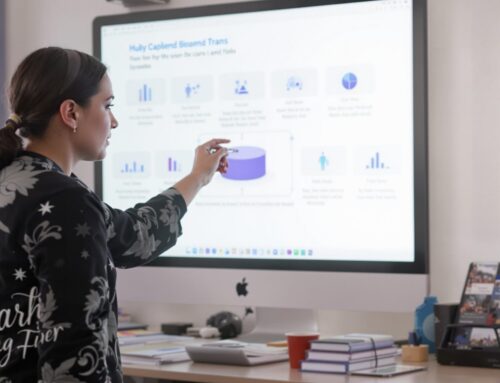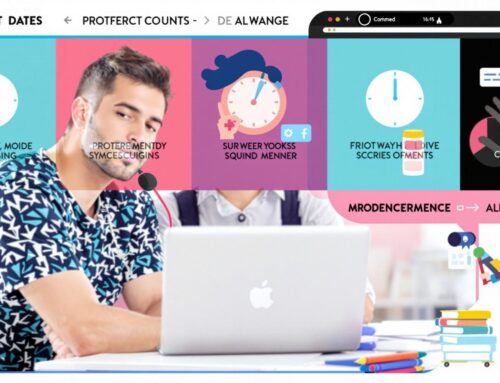The Annual Audit: A 1-Hour Exercise to Set Up Your Most Successful Year Ever
Transform your sprawling year-end reflection into a focused, evidence-based strategy session that delivers actionable results in just 60 minutes. This annual review borrows proven audit methodology to create a comprehensive personal audit and goal setting exercise that replaces hours of unfocused planning with a structured approach to academic planning, professional development plan creation, and strategic career planning.
Key Takeaways
- Complete a comprehensive self reflection and strategic planning session in just one hour using proven audit phases
- Create a one-page execution plan with your top 3 goals, 5 key risks, and 7 measurable KPIs with clear targets
- Use structured evidence-gathering to validate your student success plan and identify gaps in your current approach
- Implement a 90-day action framework that connects directly to your new semester goals and long-term objectives
- Establish monthly monitoring systems that turn your annual planning into a continuous improvement process
The 60-Minute Framework That Transforms Your Planning Process
Most people spend hours on unfocused reflection that yields vague intentions rather than actionable plans. This structured approach transforms how to plan your year by applying the four standard audit phases: planning, risk assessment, evidence gathering, and reporting. According to DataSnipper, these phases provide a systematic framework that ensures comprehensive coverage while maintaining focus on material outcomes.
The beauty of this methodology lies in its time-boxed structure. Instead of meandering through endless self-analysis, you’ll move through each phase with specific deliverables. Your personal audit becomes a strategic planning session that produces a one-page blueprint containing your top three goals, five critical risks with mitigations, seven key performance indicators with baseline measurements, and a detailed 90-day action plan.
Your Minute-by-Minute Roadmap to Success
This structured agenda ensures you cover every essential element without getting sidetracked. The planning phase (0-10 minutes) defines your scope and material areas. Focus on what truly matters: academic performance, career advancement, financial health, relationships, and personal development. Confirm what “success” means for each area using specific, measurable criteria.
The risk assessment phase (10-20 minutes) identifies your top five risks using a likelihood versus impact matrix. Common risks include academic overload, financial constraints, health issues, relationship conflicts, and career stagnation. For each risk, note existing controls and gaps that need attention.
During the evidence and testing phase (20-40 minutes), review last year’s performance data. Examine your grades, income, savings, fitness metrics, and relationship quality indicators. Assurance Dimensions emphasizes that evidence gathering requires verification against source systems, so pull actual data rather than relying on memory.
The reporting phase (40-55 minutes) synthesizes everything into your one-page plan. Include three company-wide goals with numeric targets, five to seven KPIs with baselines and targets, your top five risks with specific mitigations, and a detailed 90-day action plan with owners and deadlines.
Finally, the sign-off phase (55-60 minutes) assigns accountability. Set monitoring cadence, agree on review dates, and establish success metrics for each element of your plan.
Essential Preparation That Cuts Execution Time in Half
Gather your “audit request list” 48 hours before your session to maximize efficiency. This professional development plan preparation includes previous year’s goals, monthly performance data, financial statements, academic transcripts, and key contract or commitment summaries. FloQast notes that organized documentation speeds the review process significantly.
Create a variance analysis deck showing your top ten performance gaps versus plan. Include narrative explanations and supporting screenshots or documents. This preparation transforms your goal setting exercise from reactive reflection to proactive strategic planning.
Organize these essential documents for quick reference:
- Previous year’s goals and OKRs with monthly progress tracking
- Financial records including bank statements and major expense categories
- Academic transcripts and course performance data
- Health and fitness tracking data
- Professional certifications and skill development records
- Major contracts or commitments (lease agreements, service contracts)
Include a control log documenting who approves major decisions in your life, how you track progress, and what systems you use for accountability. This creates the foundation for effective self reflection and ensures your academic planning has solid data backing.
Phase 1: Planning Your Scope and Defining Success
Effective planning starts with defining materiality thresholds. Focus on items that drive more than 10% of your income, academic performance, or time allocation. According to AuditBoard, successful planning asks why each item belongs on your plan, what happened previously, and what success looks like.
Your material areas typically include revenue and career advancement, academic or professional development, financial health and cash flow, relationships and networking, and operational efficiency in daily routines. For each area, create a one-slide recap with three bullets: what happened last year, why it happened, and implications for this year’s planning.
Confirm your objectives using specific numeric targets. Instead of “improve finances,” specify “increase savings rate to 20% and build six-month emergency fund.” Rather than “better grades,” define “maintain 3.7 GPA while completing thesis research.” This precision transforms vague intentions into measurable outcomes that support your career planning objectives.
Review prior-year findings and remediation status. What did you identify as problems last year? Which solutions worked? What gaps remain? This analysis prevents repeating the same planning mistakes and ensures your new semester goals build on previous lessons learned. For students managing multiple priorities, effective time management strategies can provide additional framework for balancing competing demands.
Phase 2: Risk Assessment and Evidence Validation
Identify risks across financial, academic, health, and relationship domains using a likelihood versus impact matrix with 1-5 scales. Financial risks might include job loss, unexpected expenses, or market downturns. Academic risks could involve course difficulty, advisor changes, or research setbacks. Health risks encompass injury, illness, or mental health challenges.
Link each risk to existing controls and identify gaps. For financial risk, controls might include emergency savings, diversified income sources, and expense tracking. For academic risk, consider study groups, regular advisor meetings, and backup research options. PwC emphasizes that risk assessment requires understanding processes and controls before testing their effectiveness.
Perform substantive checks on critical performance indicators using these verification methods:
- Income verification: reconcile claimed income against bank deposits and tax documents
- Academic performance: verify GPA calculations against official transcripts
- Fitness metrics: confirm claimed improvements against tracking app data
- Relationship quality: review communication frequency and shared activity logs
- Skill development: validate certifications and completed courses against official records
Use sampling for efficiency by examining 10-30 representative items stratified by importance. Document your methodology and rationale for each check. This evidence-based approach ensures your student success plan rests on verified data rather than wishful thinking.
Creating Your One-Page Strategic Blueprint
Your annual audit report synthesizes all analysis into actionable format. Start with three company-wide goals that have numeric targets and specific deadlines. Examples might include “Increase income by 25% through promotion or side business by December 31st” or “Complete graduate program with 3.8+ GPA by May graduation date.”
Define five to seven KPIs with 2024 baseline, 2025 target, data source, owner, and review cadence. Standardize the format: KPI Name, Clear Definition, Previous Year Actual, Current Year Target, Data Source, Review Schedule, and Accountability Owner. This structure transforms your goal setting exercise into a measurable system rather than hopeful list.
Document your top five risks with specific mitigation strategies and testing plans. For each risk, specify the control mechanism, responsible party, and KPI that will signal risk escalation. This proactive approach prevents problems rather than just reacting to them.
Include a detailed 90-day action plan with 5-7 specific actions, clear owners, and firm deadlines. Each action should connect directly to either a strategic goal or risk mitigation. Require red/amber/green status assignments and pre-commit to monthly review meetings. This creates the accountability framework that turns planning into results.
Essential Metrics and Control Systems
Track these critical performance indicators across key life domains. Growth metrics include income increase percentage, new skill acquisitions, and network expansion rate. Profitability measures encompass savings rate, expense ratios, and return on educational investment. Efficiency indicators track time management, productivity ratios, and cost per outcome achieved.
Customer and relationship metrics include net promoter scores from colleagues, satisfaction ratings from family and friends, and retention rates in professional networks. Operational metrics encompass on-time delivery for commitments, cycle time for completing projects, and quality indicators for work output.
Implement these essential controls for year-long success:
- Financial controls: monthly budget reconciliation, expense approval thresholds, and automated savings transfers
- Academic controls: weekly study schedule adherence, assignment deadline tracking, and grade monitoring systems
- Health controls: daily activity logging, regular check-ups, and stress level monitoring
- Professional controls: skill development tracking, networking activity logs, and performance review preparation
Specify each control’s frequency, responsible party, evidence artifact, and testing method. This creates the infrastructure that supports sustained progress rather than sporadic effort. Regular monitoring becomes part of your routine, much like building sustainable happiness habits into daily life.
Year-Long Execution and Continuous Improvement
Establish a monitoring cadence with monthly 60-minute “mini-audits” focusing on KPI performance and risk status updates. Conduct quarterly 2-hour deep dives for comprehensive review and course correction. Annual 1-hour resets using this same framework ensure continuous evolution of your strategic approach.
Maintain centralized documentation with version control and rolling findings logs. Store contracts, approvals,
news via inbox
Get our best unfiltered stories and boldest ideas delivered straight to your inbox.
























